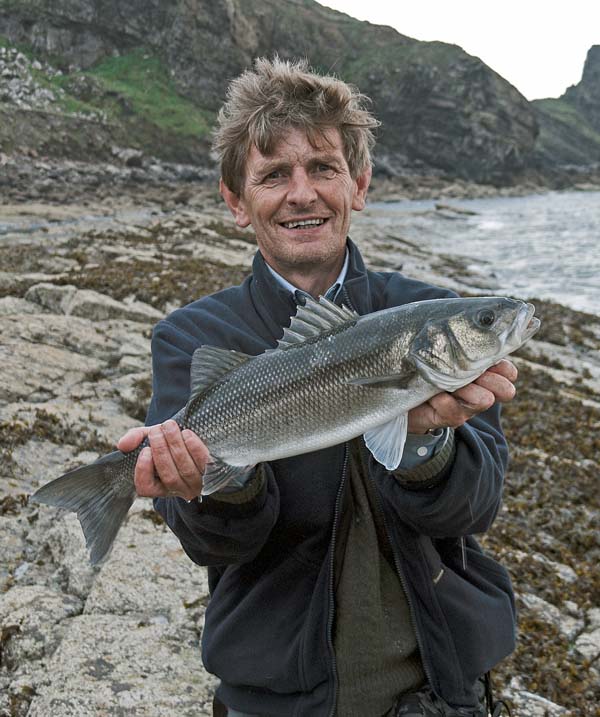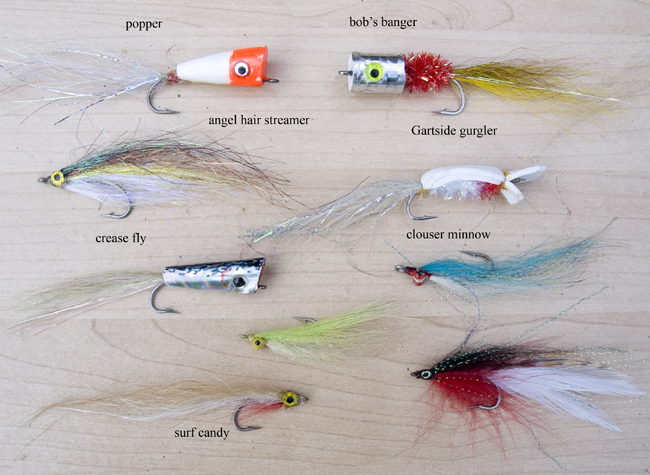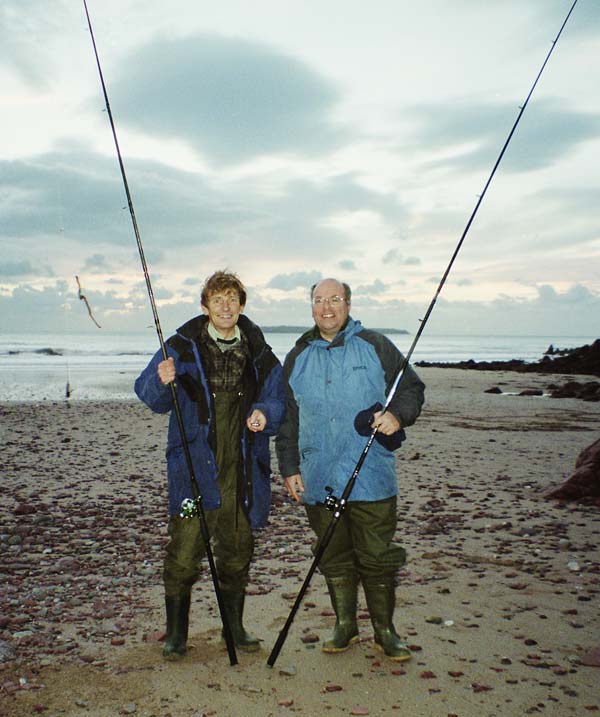
Sport Fishing for Bass
An article by Alan Parfitt.
A few days ago I was chatting to Sewin expert Alan Rees and we both agreed as to how lucky we are to live in South East Wales. It really is God’s country. Within an hours journey, we have access to three of the most famous rivers in the UK.
The Wye, Usk and Towy are wonderful rivers which each can offer a different fishing experience. The Wye for its Salmon, Trout and fabulous coarse fishing. The Usk for quality wild brown trout and Salmon while the Towy is the principality’s major large Sewin (sea trout) river.
You can simply ask yourself in the morning “for what and where shall I fish today”.
Let us not forget though that South Wales is a Mecca for a fourth sports fish, which is becoming of increasing interest to fly fishermen.
The Sea Bass or Draenog y Mor is found all around the Welsh coast.
Highly prized for its culinary quality the Bass has long been a target for rod and line fisherman using bottom-fishing techniques. In this article though I am only going to look briefly at Sports fishing for this supreme salt-water fish.
What is sports fishing you may well ask?
Gilbert Harding, a well-known television personality of several decades ago was always willing to make the point that the term “Sport” is widely misused.
I agreed with him, which I suppose is the main reason why I remember him at all. Gilbert always maintained that Football, Tennis, Cricket etc. are all games and not sports. If an activity involves a competition between individuals or teams then it has to be classed as a game.
Sport, he argued is pursued as an individual pitting himself against something in a physical way.
This places hunting, shooting and fishing clearly within the definition of sport or does it?
Sports fishing is often used to differentiate it from other types of fishing. If one uses the physical activity requirement for something to be defined as a sport then sports fishing would certainly include Fly fishing and spinning but not the static bottom or float fishing. What about trotting a float I hear you ask. You can decide for yourself.
I include three methods of fishing for Bass, which I am happy to classify as sports fishing and shall deal with them in turn.
They are fly-fishing, spinning and surfcasting but firstly some basic commandments which can apply to all three techniques.
Rule 1. Find your Bass
It might seem easy but in fact, this is often the most difficult task. It may appear obvious that you cannot catch a fish, which is not there.
Anglers who simply find a spot and fish it in the blind faith that fish are there amaze me. I would love a £1 coin for every time I have watched optimistic anglers spin for hours on end like a factory production machine with no sign of a fish for their efforts. If you do not have any luck, move on. This is “sport fishing” so it is a roving game and the successful angler is always on the move. All the successful Bass anglers I know are prepared to wander. There are of course exceptions. Bass can suddenly appear from nowhere so if you wait long enough then a fish will probably pass by.
This usually corresponds to a specific state of the tide so why wait all day. Fish the spot when the fish are there and try somewhere else when they are not. A tide race is often where the Bass are only there for a short time or at high tide on the open coast. You will learn from experience together with a little bit of luck. Try enough spots and you will succeed. It has taken several decades to build up my knowledge of good Bass marks but the effort has been worth it. If you do catch Bass at a particular mark then don’t just remember its location is but the state of tide, time of day, and size of the tide. Come back two weeks later when the tide is near the same and you may well do well again but there is no certainty.
A piece of advice frequently given in the angling press is to ask the locals where to fish. Do so by all means but remember that if it’s a known mark then it will be heavily fished.
Bass are quite localised in their summer habits and a mark can be fished out quickly. Far better is to find your own.
Rule 2. Learn to Keep a Secret
When you do find some hot spots tell no one. Not your brother, wife, mother or lover. It’s only a secret when only one person knows. Keep it a secret.
I know of more than one “Bass man” who will not fish if they spot fish when anyone else is around.
I once got caught out when catching fish after fish at around 5 to 6lbs. Fortunately, the “spy” turned out to be of a similar disposition to me and we are now firm friends. The secret has been broken but still, only a few people know the mark.
Rule 3. Learn to read the Water
This complements rule no 1. The ocean is huge and many newcomers are overwhelmed when faced with the prospect of casting out into its enormity. Trust me when I state that if the physical conditions are correct then the Bass will be there at some stage.
I expect we have all seen plenty of articles in the magazines with pictures of the typical bass ground and they can help. Trying to describe good Bass ground is almost impossible in print. Eventually, you will almost instinctively recognise good Bass territory and be able to fish it with a high degree of confidence even though you may never have fished it before. Again there is no substitute for time and effort.
To get you started the best thing I can suggest is the following. Get yourself an ordnance survey map and look for sandy bays with rocky headlands or areas of rough ground near clean sand. Bass love sandy coves but you don’t fish over the sand when “sport fishing”.
Look for the rocky or boulder-strewn ground which runs at the edges of the bay and parallels the direction of the tide along the beach from low to high water. The Bass will move up the tide searching along the edge of the rocks. Small coves are often attractive to Bass in high summer because small fry seems to get trapped in the coves.
Look for headlands on the map especially if it looks as though there might be a good tide race around it. Remember though you do not need deep-water.
It is worth mentioning at this point that you need clear water for both spinning and fly-fishing. I will not say you cannot catch Bass in dirty water but they are often feeding by sight. In west Wales the water only becomes turbid for short periods and during the Bass season is usually crystal clear. Just what we want.
Rule 4. Break the Rules
Read all you can about Bass fishing but be wary of some claims, which are many and varied.
Many “rules” have simply been perpetuated from one book or magazine to another and in fact are completely incorrect.
If you feel something might work try it.
Many of the modern methods I will talk about are only been discovered by a few pioneers with the confidence to experiment.
Spinning
Many anglers who fly-fish for Salmon and Sea trout will also spin for them when the conditions are right.
Equipment suited to Salmon spinning will suffice for Bass as well but those who take their Bass spinning seriously have developed techniques specifically for these fabulous fish.
I do not have enough time or knowledge to provide detailed instructions for all eventualities so you will have to buy a book for that purpose. I have, however, still managed to catch hundreds of Bass when spinning and wish to simply share some observations made in over 40 years.
I like to use long rods. 10ft at the shortest with 11ft much more useful. Despite preferences and some claims that short rods are better there are good practical advantages of longer rods.
The Sea is Dangerous
Never forget this. A long rod allows you to stand much further back or at a higher level from the water. Often you need to hold the rod tip almost, or sometimes in, the water to prevent the lure rising too high and this can only be done in safety with a long rod. A long rod has a big advantage when bringing your lure over close in obstructions common in the areas we fish. If there is a large swell coming straight at you go elsewhere or home.
There will always be an extra-large wave every so often. Bass will take almost any lure when they are in the mood. Any tried and tested lure will work. I have caught them on Spoons, spinners, plugs, spinnerbaits and rubber lures. These days I only use Toby spoons and plugs. This is not because they are always the best but because I like to use them. Toby spoons in 20gm. size cast well and are tremendous fish attractors. They do have a reputation as poor hookers and this is certainly true with Salmon and Sewin though it seems less of a problem with Bass.
Plugs are always my no. 1 choice. Plugs give you more options than spoons. Floating plugs can be fish in the shallowest of water and the speed of retrieve changed at will.
In theory, you should hardly ever lose a floating plug which is important considering their cost. In practice, you will lose a few but the loss gets less and less as you become more accustomed to their use. I rarely use sinking plugs because the Bass are usually in shallow water less the 10ft and often 2 to 3ft. Excellent plugs are the Rapala j11 and j13 jointed floaters, as are the Bomber and Rebel equivalents.
The main problem with these lightweight plugs is the difficulty in casting them in windy conditions.
The most fun plugging for Bass is using surface popping plugs. This technique developing by pioneers in the Bass Sport Fishing Society has received quite a bit of publicity in the last year or so. If you have never tried it you are really missing out. It is an act of faith to use them for the first time and believe that bass will come to the surface and engulf something that resembles a floating cigar tube. Once you see it happen it becomes very difficult to fish for them in any other way. The most well known surface-popping plug is the “Chug Bug” though the Rapala “Skitter Pop” is very good as is the “Aile-Magnet”.
You simply cast the plug and retrieves in short sharp jerks with a pause between.
Fish will often take the static lure. You will see the fish take the lure, which makes it so exciting.
Fly-Fishing
The great advantage of spinning is the area of water you cover.
The plug or spoon will cast further and in more difficult conditions such as strong wind and rough seas. Another enormous advantage of spinning is that it helps you to discover the hop spots to try with a fly.
My preferred method to catch Bass has to be with the fly rod. I don’t really know why. I just do. It’s not an affectation. I fish for pleasure, very rarely kill a Bass so I fish in the style I enjoy the most and gives me the greatest satisfaction.
Fly-fishing for Bass like plugging is receiving more and more exposure in the press but we must be realistic about it. It is so easy to write about it but in actuality, it is a lot more difficult than it appears in print. On the West Coast of Wales facing thousands of miles of open Ocean, conditions do not often allow successful fly fishing. I suppose we could battle wind and wave but what we want is a good day out and if conditions suggest that plugging is an easier option then plugging it is. In other words, fly-fishing for Bass is great fun but be practical and try it when conditions allow. This philosophy means that on every Bass-fishing trip when we are not specifically surf fishing I take both the spinning and fly rod.

To be perfectly honest on most occasions we are unable to use the fly rod. This may be due to strong wind but the most frequent cause is surf and weed.
The best Bass locations we fish are over rocky and shallow water and by late spring the prolific weed growth can lead to the water’s edge becoming choked with weed fragments, which completely tangle up your line.
I am thinking of experimenting with a double-handed Salmon rod to both make casting less tiresome and to enable the rod tip to reach out over the weed blanket. Another difficulty in West Wales is that there is often little backcasting room when fishing off some rock marks when the cliffs are close behind you. I suspect that many UK authors who write about fly-fishing in the salt have either never tried it fully for themselves or only fish in the tropics, wide-open estuaries and beaches. I am not trying to put the reader off trying to fly-fish but just to make sure that you realise it is not as straightforward as it may appear if you try to fly-fish the open coast. Having said all that when you do get it right the reward is fantastic. The best I have managed is over 100 fish in a session. They were only school Bass but what fun.
The choice of flies is enormous and there are now a few British websites dedicated to saltwater fly fishing. Clouser minnows are excellent, as are surf candies. Sometimes Bass can become preoccupied with small shrimps and you need to imitate these. Surface poppers in the form of flies work just as well their plug cousins, and for visual reasons, it is my favourite method.
You only need a floating or intermediate line for most purposes. On calm days you can get by with a reservoir type rod but my standard rod is an 8# to 9#. Moving up to a 10-weight in severe conditions.
Bass seem to respond better to continuous steady retrieve rather than the usual strip and pause.
To achieve the steady retrieve place the rod under your arm and pull the line hand over hand (roly-poly).
There are lots of features on the web about fly-fishing for Bass in the US. Read them by all means but don’t believe what they say will automatically work in the UK.
Big flies are fine but difficult to cast. British Bass have no hesitation eating more modest mouthfuls.
Do not worry about casting too far. Sometimes it helps if you are a good caster but often the Bass are closer than you imagine.
A favoured tactic with both fly and plug is walk the water’s edge at high water on a beach on which the sand gives way to a steep embankment of shingle/ pebbles. The bass seems to patrol the junction of the two and it is only a short cast to reach them. I once picked a nice fish by accident in such a situation. My fly line had entangled in weed and with my fly resting a few feet out in the water I cleared the line. As I did 3lb Bass picked up the static fly.
Finally, try the best of both worlds. Put up your spinning rod, tie on a popper and a couple of feet above it a nice juicy Bass fly. It is the fly, which often takes the fish especially when the water is calm and clear.
Surf Fishing
I don’t surf fish much these days so when I do it is all the more enjoyable. To cast a line into the breakers at sunset on the wild dramatic Pembrokeshire coastline is an experience not to be missed.
Nearly all my surf-casting is done in the Autumn when the storms have whipped up the surf and made it too dirty and rough for both spinning and the fly. Casting a 4-6oz weight to the horizon at low water, putting the rod in a rod rest and waiting for a bite is not for me. I do not class this as sport fishing.
How can surf fishing become sport fishing? The answer lies in the way you fish. Leave the 4-6oz rod at home. The 2-4oz bass rods sold for the purpose are fine though I much prefer a 1-3oz.
This rod is far more fun to use and since you ALWAYS hold the rod it is far more pleasant. A 2-3oz lead fished correctly will handle most conditions and since you usually do not want to anchor the lead in the seabed wire grips are unnecessary. The idea is to cast your lead and bait a moderate distance in the surf and let the sea move you end-rig around.
I hammer my surf leads with a lump hammer so they have flat sides. They can still move but it gives you a little more control.
You are in practice letting the bait move and find the fish rather than the other way around. The surf will move the lead and bait and will soon find the gullies and other features where Bass may be lurking. In very heavy surf this technique is not always possible but is the method to use whenever possible.
This method requires you to keep in touch with your bait at all times and follow the weight as it moves. Again it’s a roving game.
Night fishing in the surf definitely gives better results than daylight, particularly in West Wales where the water can be crystal clear. Use whatever bait you wish. Ragworm is deadly while squid and Sand eel are successful and easier to obtain.
That’s about it. There are lots of other things I could say and in fact, having read what I have written makes me realise I have told you hardly anything. Still, it’s done now and since the purpose of this article is just to give you an overview it can stay at it is.
I have given away no secrets. Go and find the marks for yourself.
It’s a great way of exploring a world-class coastline and you will be enriched by the effort. The Bass stay around Pembrokeshire virtually all year but late May to December is the main time. A productive period is October/November, which coincides very well with the end of the Salmon season. Go on give it a go.
Further Reading
- www.coastalcottages.co.uk – If you want to combine a family holiday with some Bass fishing I can thoroughly recommend this company. I have used them many times. Look for any deals on the website
- www.ukbass.com – The web site of the Bass anglers sport fishing society. If you are keen on Bass fishing you should join. It’s £18 a year and you get quarterly magazines. They do more for the future of Bass than anyone. Join to support them.
- www.veals.co.uk – The well-known tackle dealer stock an excellent range of lures for Bass
- www.newsurf.co.uk – Lets you know what the surf in Pembrokeshire is like. This site is updated every day at about 9.00 hrs.
- www.ukho.gov.uk/easytide – go to this site and get a free 6-day tidal prediction for anywhere around our coast.






